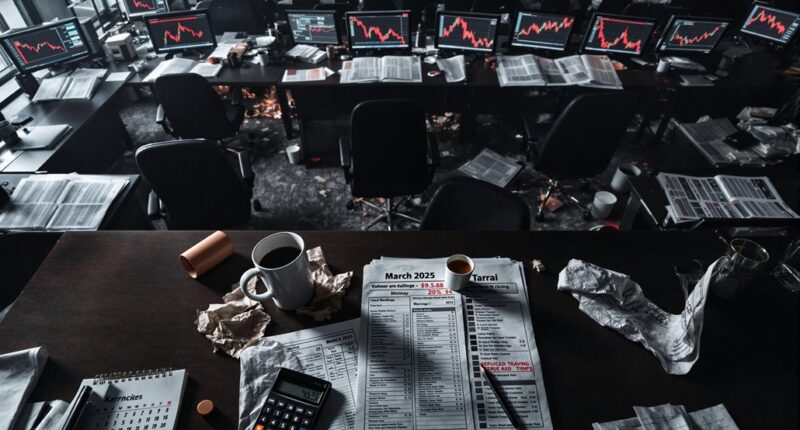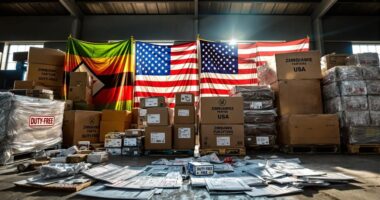The imposition of 25% tariffs on Canadian and Mexican imports caused immediate supply chain chaos across North America. Companies scrambled to adjust prices and evaluate losses before exemptions were announced just 48 hours later. This “tariff whiplash” triggered market volatility, with the Dow dropping 450 points. Small businesses and auto manufacturers face particular hardship due to limited resources and complex cross-border operations. The ongoing trade uncertainty continues to reshape American economic stability.
As global markets continue to reel, businesses across North America are struggling to keep up with rapidly changing trade policies. The latest round of tariffs has created what many economic experts are calling “tariff whiplash” – a destabilizing pattern of sudden policy shifts that make long-term planning nearly impossible.
In March 2025, the administration imposed 25% tariffs on Canadian and Mexican imports, sending shock waves through supply chains that have been integrated across North American borders for decades. Company executives rushed to calculate potential losses and adjust pricing strategies accordingly. Many began seeking alternative suppliers or considering layoffs to offset the expected increase in costs.
Supply chain chaos erupted as 25% tariffs hit North American trade, forcing companies to hastily rewrite survival plans.
Just 48 hours later, the administration announced exemptions for both countries, forcing businesses to reverse course on their emergency planning. “We had three emergency meetings in two days,” said Maria Gonzalez, CEO of a Michigan-based auto parts manufacturer. “First to figure out how to handle the tariffs, then to understand the exemptions, and finally to cancel orders we’d made with new suppliers.”
The rapid policy reversal caught many companies mid-transaction. Some businesses had already adjusted prices upward or made commitments to new suppliers outside the tariff zones. Others had begun notifying employees about potential workforce reductions. The sudden exemptions left them scrambling to undo these changes.
For consumers, the uncertainty is translating into volatility in retail prices. Some stores raised prices immediately following the tariff announcement, only to face customer backlash when the exemptions were announced shortly after. Others held prices steady but warned that future fluctuations were likely if the trade situation remained unstable.
Financial markets have responded with increased volatility. The Dow Jones Industrial Average dropped 450 points the day after the initial tariff announcement, then rebounded partially following news of the exemptions. Currency exchange rates between the U.S. dollar, Canadian dollar, and Mexican peso have shown similar instability.
Economic analysts warn that even temporary tariffs can cause lasting damage. “It’s not just about the direct cost of the tariffs,” explained economist Thomas Chen. “It’s about businesses losing confidence in the stability of trade rules. That uncertainty leads to delayed investments and conservative hiring practices.” The uncertainty surrounding these tariff regulations has created significant hesitation among investors, potentially slowing overall economic growth.
Small businesses appear particularly vulnerable to the rapid shifts. Unlike large corporations, they often lack the resources to quickly pivot or absorb short-term losses. Many report putting expansion plans on hold until the trade environment stabilizes.
The auto industry faces particular challenges, with companies like GM and Ford warning that continued tariff volatility could result in profit losses in billions due to their complex cross-border supply chains.
As North American supply chains continue to adjust to these policy swings, economists predict that sustained unpredictability in trade policy could eventually lead to permanent structural changes in how companies approach cross-border business relationships, potentially undermining decades of regional economic integration.
Conclusion
As tariffs continue to rise, American consumers and businesses face challenging economic consequences. Prices for everyday goods are increasing, while farmers and manufacturers struggle with export barriers. Economists warn this trade war could slow economic growth nationwide. Though some industries may benefit from protection against foreign competition, most Americans are feeling the squeeze in their wallets. The long-term impact remains uncertain.








